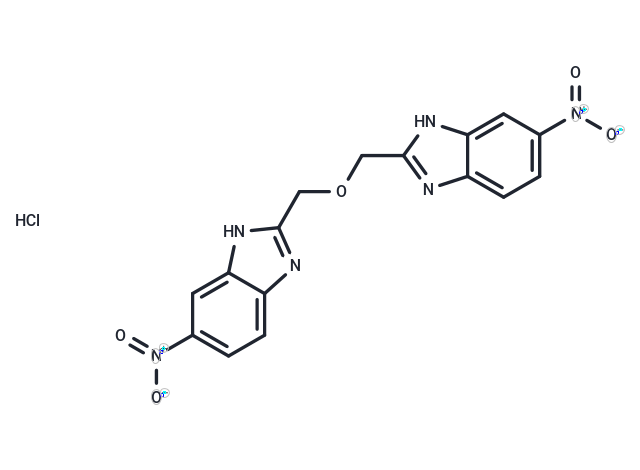Shopping Cart
Remove All Your shopping cart is currently empty
Your shopping cart is currently empty
VU591 hydrochloride is a selective renal outer medullary potassium channel (Kir1.1, ROMK) antagonist (IC50:0.24 μM). Thought to block the intracellular pore of the Kir1.1 channel. Exhibits no effect on Kir7.1 at concentrations up to 10 μM; does not inhibit Kir2.1, Kir2.3 or Kir4.1. Displays similar potency to VU 590

| Pack Size | Price | USA Warehouse | Global Warehouse | Quantity |
|---|---|---|---|---|
| 1 mg | $30 | In Stock | In Stock | |
| 5 mg | $68 | In Stock | In Stock | |
| 10 mg | $113 | In Stock | In Stock | |
| 25 mg | $238 | In Stock | In Stock | |
| 50 mg | $407 | In Stock | In Stock | |
| 100 mg | $569 | In Stock | In Stock | |
| 200 mg | $773 | - | In Stock | |
| 1 mL x 10 mM (in DMSO) | $76 | In Stock | In Stock |
| Description | VU591 hydrochloride is a selective renal outer medullary potassium channel (Kir1.1, ROMK) antagonist (IC50:0.24 μM). Thought to block the intracellular pore of the Kir1.1 channel. Exhibits no effect on Kir7.1 at concentrations up to 10 μM; does not inhibit Kir2.1, Kir2.3 or Kir4.1. Displays similar potency to VU 590 |
| Targets&IC50 | ROMK:0.24 μM |
| Molecular Weight | 404.76 |
| Formula | C16H13ClN6O5 |
| Cas No. | 1315380-70-1 |
| Smiles | Cl.[O-][N+](=O)c1ccc2nc(COCc3nc4ccc(cc4[nH]3)[N+]([O-])=O)[nH]c2c1 |
| Relative Density. | no data available |
| Storage | Powder: -20°C for 3 years | In solvent: -80°C for 1 year | Shipping with blue ice/Shipping at ambient temperature. | ||||||||||||||||||||
| Solubility Information | DMSO: 4.33 mg/mL (10.7 mM), Sonication is recommended. | ||||||||||||||||||||
Solution Preparation Table | |||||||||||||||||||||
DMSO
| |||||||||||||||||||||
| Size | Quantity | Unit Price | Amount | Operation |
|---|

Copyright © 2015-2025 TargetMol Chemicals Inc. All Rights Reserved.